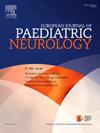神经性溶酶体贮积症的基因治疗
IF 2.3
3区 医学
Q3 CLINICAL NEUROLOGY
引用次数: 0
摘要
溶酶体贮积障碍是一组多系统单基因疾病,主要由酶缺乏引起,酶缺乏破坏溶酶体功能。那些导致神经元功能障碍的被认为是“神经病变”。这些神经退行性疾病虽然个别罕见,但总的来说并不罕见,并且是基因和细胞治疗的有吸引力的目标。在这篇综述中,我们描述了这类疾病的治疗现状,其中儿童表现出更严重的表型。我们描述了细胞治疗和基因治疗的条件、原理,并比较了AAV和慢病毒治疗方法。这是一个快速发展的医学领域,我们强调已经取得的进展,以及在将这些疗法带给所有患者方面面临的挑战。在整个过程中,我们提供了提供这些疗法的实际见解,并为未来提出了前进的方向;在临床医生、学术界和产业界之间,利用联合疗法弥合强制性延迟和增加合作工作实践。本文章由计算机程序翻译,如有差异,请以英文原文为准。
Gene therapy in neuronopathic lysosomal storage disorders
Lysosomal storage disorders are a group of multisystem monogenic conditions caused mostly by enzyme deficiencies which disrupt lysosomal functioning. Those which result in neuronal dysfunction are considered ‘neuronopathic’. These neurodegenerative conditions, while individually rare, are collectively not uncommon, and are attractive targets for gene and cell-based therapies. In this review we describe the current landscape of such therapies in this group of disorders, where the more severe phenotypes manifest in children. We describe the conditions, the principles of cell therapy and gene therapy, and compare AAV and lentiviral approaches. This is a rapidly evolving area of medicine, and we highlight progress made, and the challenges that are ahead in bringing these therapies to all patients. Throughout, we offer real-world insight into delivering these therapies and suggest a way forward for the future; utilising combined therapies to bridge the obligate delays and increasing collaborative working practices in therapeutic development between clinicians, academics and industry.
求助全文
通过发布文献求助,成功后即可免费获取论文全文。
去求助
来源期刊
CiteScore
6.30
自引率
3.20%
发文量
115
审稿时长
81 days
期刊介绍:
The European Journal of Paediatric Neurology is the Official Journal of the European Paediatric Neurology Society, successor to the long-established European Federation of Child Neurology Societies.
Under the guidance of a prestigious International editorial board, this multi-disciplinary journal publishes exciting clinical and experimental research in this rapidly expanding field. High quality papers written by leading experts encompass all the major diseases including epilepsy, movement disorders, neuromuscular disorders, neurodegenerative disorders and intellectual disability.
Other exciting highlights include articles on brain imaging and neonatal neurology, and the publication of regularly updated tables relating to the main groups of disorders.

 求助内容:
求助内容: 应助结果提醒方式:
应助结果提醒方式:


